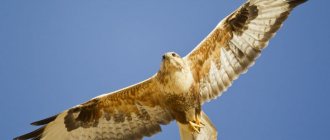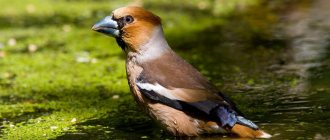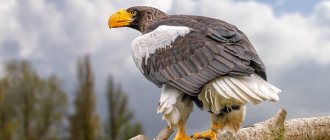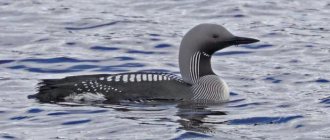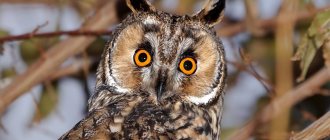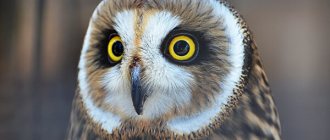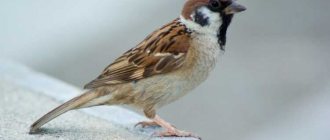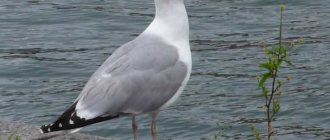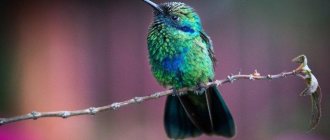Owls are representatives of the oldest birds on Earth. According to ornithologists, they lived on the North American continent millions of years ago.
These intelligent creatures are predators. They have long attracted the attention of people - our ancestors endowed them with mystical and mysterious properties.
What type of bird is it and what is it called?
It is also known as the white owl. Belongs to the genus Owls, the Owl family and the class Owls. The bird got its second name because of the white color of its feathers. At first it was separated into a separate genus. However, modern ornithologists attribute it to the genus Owl.
The polar owl looks very interesting
Important! Scientists believe that its ancestor lived about 80 million years ago. This fact is confirmed by the fact that polar owls are found on all continents. But they do not fly across the ocean on their own.
The main difference between owls and other birds is the absence of eyeballs. This is the reason why their eyes do not move. This feature is compensated by the mobility of the neck: it can rotate 240°. Owls also have very sharp eyesight.
Adult bird
Removal of troubles
In medieval books about magic, the tawny owl and the eagle owl were often mentioned as protectors from bad events.
There are legends where there are magical guardian owls who never sleep, protecting ordinary people from black magicians. A person can find protection in such a bird when he is tormented by forebodings. In this case, at sunset you need to look in the direction where the sun is hiding, and, clutching a clay figurine of an owl or a real owl feather in your hand, ask for protection from harm.
You can formulate this in your own words, the main thing is to put in sincere feelings.
Description of appearance
Female snowy owls are larger than males. Their average body length is from 60 to 70 cm. Their average wingspan is 1.5 m.
The weight of females is also greater than that of males and reaches 3 kg. Males weigh about 2.5 kg. The polar owl's plumage is thick, so it can live in cold regions. Feathers cover the legs, while they resemble wool. Even the bird's beak has feathers.
Important! Polar owls have a special wing structure. Therefore, their flight is almost silent, and the animals are not aware of the approach of a predator.
Bird in flight
Another feature of these birds is molting with the change of season. They shed their old plumage with the onset of summer. And the second time - at the end of autumn.
The color of an owl is best suited to its habitat. It not only facilitates the hunting process, but is also a successful camouflage. The color of the feathers depends on its age. The chicks are born with a brown tint. Adult birds are white with dark speckles. Sometimes they resemble stripes.
Most dark inclusions are found in the plumage of females. Some males are completely white.
Important! The pattern of inclusions in each individual is unique, like a person’s fingerprints.
The polar owl's beak resembles a hook in shape. It is very sharp and covered with small bristles. Additionally, it is protected by feathers, so it is difficult to immediately notice.
A rather large, rounded head. She has very small ears that are hard to see. But the bird has acute hearing, thanks to which it can hear its prey at a great distance. The eyes are also round and yellow. Due to its acute vision, the owl can hunt even in the polar night.
Her voice resembles a scream or croak, and stands out for its harshness and volume. And it is often heard by animals and people who find themselves in the forests of the tundra.
Appearance of an owl
Other meanings
In Native American traditions, the owl is called the night eagle. Her totem has a special connection with the night and the Moon, while the eagle is associated with the Sun.
The owl is associated with witchcraft in a number of European and Native American traditions. Witches often considered her the main guide among animals.
In Greek mythology, Athena, the goddess of wisdom and war, was often represented as an owl. It is said that the Romans believed that someone would reveal all their secrets while sleeping if a feather from this bird was placed next to their pillow.
Natural habitat
Many people are interested in where the white owl lives. The polar owl is predominantly found in northern latitudes and on almost all continents. It is most often found in tundra and taiga forests in Russia and Canada. Sometimes you can see them:
- on Novaya Zemlya;
- in Greenland;
- on Wrangel Island.
Snowy owls inhabit almost the entire Arctic. This species has wintering and nesting areas. For these places, they prefer places that are practically not covered with snow and ice. Wintering for polar owls begins in mid-autumn, then they fly back in early spring. It is extremely rare to see them in the southern regions.
Adult owl
The white owl practically does not roam. The reason for a change in habitat may be a lack of food or an increase in the amount of snow. Then the bird has to look for a new place. The polar owl prefers open spaces; its nest is usually located on low hills, because it does not rise above 1,000 m.
Attention! She tries to avoid forested areas, choosing tundra and forest-tundra. This choice is due to the fact that it is more difficult to hunt in places with high vegetation.
The harbinger of death
There are many superstitions associated with these noble birds, many of which center on death. In Europe and America, the owl was seen as a harbinger of doom. This was associated with some peoples, such as the Dakota Indians and some Germanic tribes and the Scandinavian Vikings, who signaled the approach of an attack by imitating the cry of an owl. It was and remains the easiest bird sound to imitate. The Mayans called the signals emitted by the nocturnal predators of Yucatan “bird moans” and believed that they foreshadowed death. The totem of the white owl among these people was directly identified with the whiteness of decayed bones.
What does it eat in the Arctic and tundra?
The snowy owl is a predator. Its main diet consists of small rodents - lemmings, hamsters. She must catch at least 4 individuals per day. In addition to rodents, the polar owl will happily feast on hares, hedgehogs and ermine. It can also hunt other birds in the northern regions. The owl rarely eats seafood and carrion.
Bird in the tundra
This bird does not hunt near its nest, flying away a considerable distance. Owls prefer to hunt in open areas where there is no tall vegetation. Otherwise, it will be more difficult for them to catch the rodent. The bird watches its prey from above for a long time. Then she dives sharply after the rodent and catches it with sharp claws or beak.
Important! If a polar owl has caught prey larger than itself, then it uses the following technique. She just hangs on her until she stops resisting. The bird then finishes it off with its beak.
Usually the polar owl hunts at dusk. But she doesn't always adhere to this rule. Sometimes the bird hunts in the early morning. The peculiarity of the white owl is that it feels comfortable even in bright light.
Polar bird on the hunt
Rescue from mistakes
In the diversity of what the owl symbolizes, Chinese culture offers an interesting option. In it, she belongs to the good characters. Wise, careful, prudent. She can often be seen sitting on a money tree. This amulet protects its owner from unreasonable expenses, unprofitable investments, and helps to save.
Any amulet in the form of this feathered creature, placed in a children's room, will help its little owner - he will obey his parents, stop being naughty, and come to his senses.
Features of character and lifestyle
These birds try to settle as far as possible from humans. Therefore, rarely anyone gets to see her. The polar owl has an independent character - almost all individuals prefer to live alone. Individuals form pairs only during the breeding season.
Owls communicate with each other, and with their loud and harsh sound they are able to scare away enemies. But these are not chatty birds: they communicate with each other only during the breeding season. During other periods, they devote most of their time to sleeping or hunting.
For reference! The main distinguishing feature of this species is the ability to lead a diurnal lifestyle. Other species of owls hunt exclusively at night.
These birds hunt mainly for rodents. Thus, they regulate their numbers, which has a positive effect on the state of the ecosystem of the tundra zone. Although snowy owls do not hunt near their nests, they defend their territories. This is used by other birds, such as seagulls. Therefore, they settle near owl nests.
Owl with white plumage
Lifestyle
Polar owls are active during the day, but go out to search for prey either early in the morning or late in the evening. Thanks to its abilities, the bird is an excellent hunter at any time of the day. When there is insufficient food, polar owls fly closer to populated areas.
They usually wander from September and return at the beginning of October. Many birds remain in place, provided there is sufficient food.
Some individuals can lead a solitary lifestyle without forming pairs.
Social structure and reproduction
The time for polar owls to create a pair comes at the end of March with the onset of warm weather. This is the time when they return after wintering. Males choose a suitable territory. Having found a nesting place, they let the females know about it.
- The male defends the territory and his mate from other individuals. If the situation requires it, he can join the fight.
- To attract the attention of the female, the male runs a short distance race. He accompanies his run with a special hoot.
- If the female pays attention to the behavior of the male, he changes tactics. His plumage becomes ruffled, he begins to stomp and flap his wings to show off all their beauty.
- An obligatory part of “owl” courtship is a gift to the female. This is a small rodent. If the female accepts courtship, a pair is formed. And they are already protecting their territory together.
Owls usually choose a mate for life. Chicks can appear from the same individuals. Very rarely they mate for only a year. Highlands are chosen for nests, and less often lowlands.
Moss, bird fluff and dry grass are used to build the nest. In total, the female lays 8 eggs at a time and incubates them for a month. Getting food becomes the responsibility of the male.
Snowy owl chick
The owls hatch gradually. Often the very last chicks die. As soon as all the owlets hatch, the mother begins to hunt. During this period, the chicks warm each other in anticipation of their mother's return. Their eyes open on the 10th day. During the same period, the chicks develop brown, slightly reddish down.
For reference! After the first molt, the color turns white. Owls can fly independently after 50 days.
Owls begin to look like adults by the age of one year and can have offspring themselves. If individuals cannot lay eggs, they skip a year. Also, the snowy owl will not reproduce if there is not enough food. She acquires offspring only under favorable conditions.
Symbolism of the night predator
When the owl is your spirit animal, you have a strong intuition and can access information and wisdom that is usually hidden to most. The spirit of this bird encourages you to look beyond deceptive appearances to the true reality of a situation or a person's motives. The totem animal test will tell you this (for example, by year of birth).
The owl is a powerful spiritual totem, providing a wealth of insight and the ability to make decisions based on intuition. Turn to him when you need to evaluate a situation or get through troubled times. He will definitely answer your call.
Modern natural enemies
She is a large tundra bird, so she is rarely attacked. But she also has enemies, because the chicks are defenseless. Their enemies are:
- arctic foxes;
- foxes;
- skuas.
Arctic foxes especially love to climb into owls' nests to feast on their eggs. Therefore, they are considered the most important enemies of polar owls.
Sometimes the death of chicks is caused by the eldest in the brood. Large owlets are capable of not only pecking the younger ones, but also eating them. But such cases are rare for these birds. Small chicks often die of hunger because the older ones in the brood can take food away from them.
Predators rarely attack adult birds. In this case, the bird scares them away with its wide wingspan. More often they fly away as soon as they hear danger. But if it is suddenly attacked by an arctic fox or another enemy, the owl falls on its back and fights off with its claws.
If her nest is attacked, the bird gets in the way to protect the offspring. She flaps her wings right in front of the predator, rises up and attacks with her clawed paws. Such actions are usually sufficient.
Bird defending itself
The meaning of totem animals
There are perhaps no better communicators of symbolic messages than members of the animal kingdom. From birds to bees, bears and badgers, the creatures of this planet offer us endless wisdom. Take the lion for example. Just by its appearance alone we can understand that this animal symbolizes power, valor and pride. Other animals, however, may be less clear in terms of their symbolic meaning, such as the snail or sparrow. Sometimes creatures are so common or overlooked that we may not notice the rich meaning they provide us. Then we need to dig below the surface. This is where we find deep meaning.
So why should we care about what animals represent symbolically? Because everything living in this world has its own meaning, which it willingly shares with us, even if we don’t always notice it. Exploring the deeper meaning inherent in every living thing opens up a whole new way for us to see ourselves and the world around us.
Example: very often we come across a specific animal. Maybe we thought it was a curious coincidence. Or perhaps this creature manifests itself at a peculiar moment in our lives. Instead of dismissing these phenomena as coincidences, we can use our intuitive ability to understand the messages that animals convey to us.
Polar Owl Population
At the moment the population is small. In North America it decreased by more than 50%. And in other habitats their numbers have become smaller. The polar owl has the status of a vulnerable species, but is not yet listed in the Red Book. Therefore, there are no additional measures to protect them.
However, scientists believe that they will soon be listed in the Red Book. The exact reason for the population decline has not been established. This may be affected by climate change because it affects their diet. The decrease in their number is influenced by human activity, which literally takes over the tundra.
Adult snowy owl
Dreams
When you think of an owl, your spirit animal may be contacting you to warn you of a danger or threat that you should pay attention to. She can give you wise insight into important issues that you should not ignore.
When a bird appears in a dream, it can also mean that the intuitive part of your personality is trying to attract attention: listen to subtle messages left to you by an unknown force, because it may be something important, but not necessarily obvious.
An owl can also be a guide, helping one through what may be a difficult and painful transition process. Since this spirit animal is often associated with death, when an owl appears in a dream, it could mean that you are receiving instructions regarding personal transformation, change.
In many dream interpretations, it may represent a deceased friend or family member who returns in the form of a spirit animal.
When this bird visits you in a dream state, you may need to let go of the past or specific negative behaviors.
If this predator kidnaps you in a dream, this message speaks of disappointment and death. In other words, your subconscious mind may be trying to draw your attention to your thoughts or actions in your waking life. This means they are counterproductive to your spiritual goals.
Death in this sense can only be a symbolic break, indicating a transition or getting rid of bad habits.

